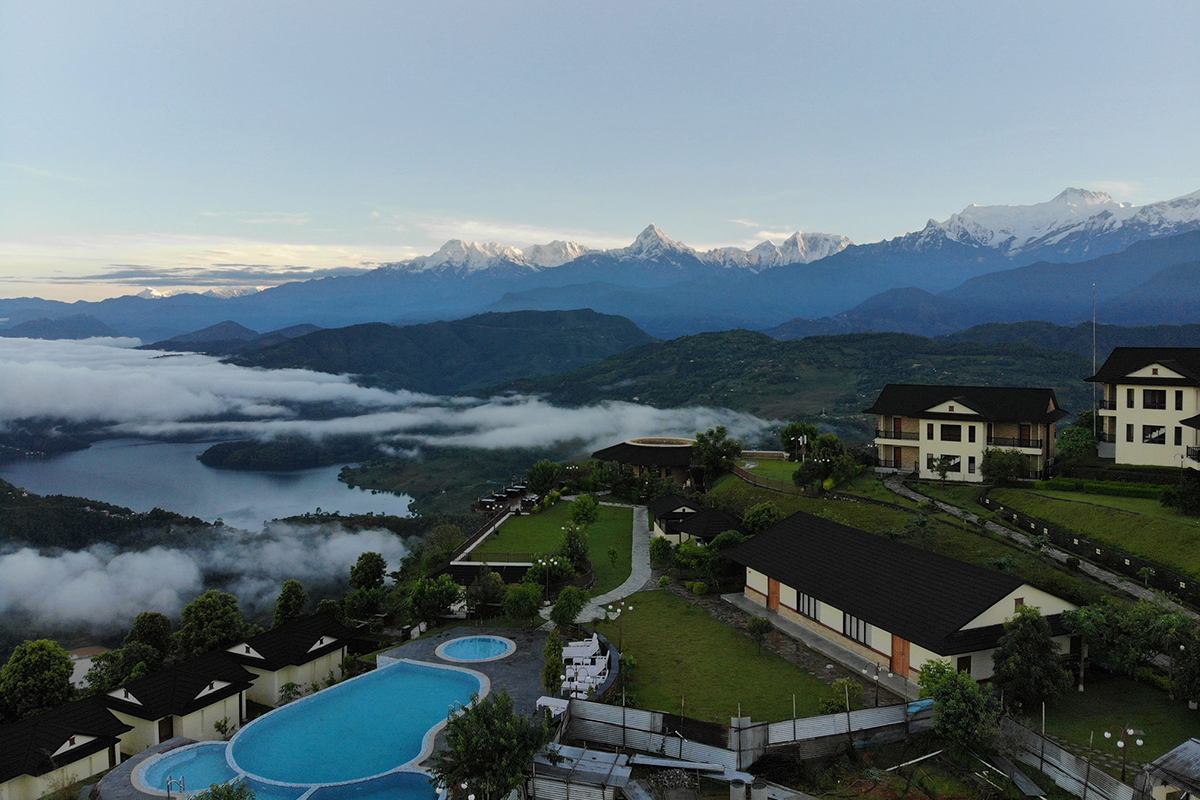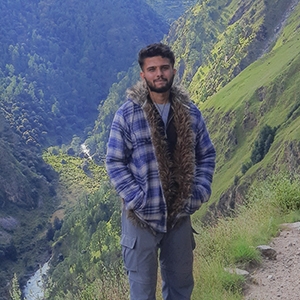Rise of Luxury Treks & Tours Redefining the Trail
Trekking in Nepal has transformed from rough routes and shared tea house stays into a luxurious adventure. Today, luxury trekking lets you explore the marvelous Himalayas without sacrificing convenience. Imagine yourself in a warm tent after a long day, enjoying meals prepared by a private chef, guided by a personal trekking professional, and even receiving a massage by experts on the trail. Routes like Everest Base Camp, Annapurna, and Upper Mustang now feature premium lodges and high-end campsites where relaxation meets wild beauty. Nepal’s trekking future welcomes travelers who seek the thrill of the mountains, without leaving behind the better things.
A luxury trek experience might include?
Personalized Services: Luxury treks focus on personalized service, starting with small group sizes and an expert private guide leading the route. A reliable crew of porters and support staff handles your luggage, sets up relaxing camps, prepares refined dining setups, and manages all the vital logistics throughout your journey in the mountains, so you can simply enjoy the experience.
Boutique Mountain Lodges: Escape behind the basic teahouse experience. Prominent chains, such as Yeti Mountain Home, Everest Summit Lodges, and The Terraces, have built luxurious lodges along popular trekking routes in Nepal. Envision ending a long day on the route by stepping into a warm room with an en-suite contemporary bathroom, a comfortable bed with an electric blanket, relaxing by a warm fire in the lounge, and choosing dinner from a menu that offers much more than just dal bhat.
Quality Food Experience: Picture yourself ending a full day of trekking and arriving at a table decorated flawlessly, ready to serve a three-course meal prepared by a professional chef. At 4,000 meters, you might bite into a warm slice of freshly baked apple pie or sip a fine glass of red wine, because in these luxury treks, the food experience advances to meet the height of the Himalayas.
Luxury in the Himalayas goes beyond just amenities; it gives you the mental and physical freedom to fully enjoy the region’s brilliance without the usual exhaustion and challenges of the route.
Luxury Heli-Tours: The Ultimate VIP Pass
Luxury in Nepal doesn’t stop at the trails, it takes to the skies. Helicopter tours have quickly evolved into a favorite among high-end tourists, redefining the experience with exclusivity and amazement. Visualize yourself sipping champagne with Everest in view, landing beside the amazing Gokyo Lakes, touching down in Mustang’s hidden wilderness, or flying in for breakfast at Hotel Everest View, all in just a few special hours.
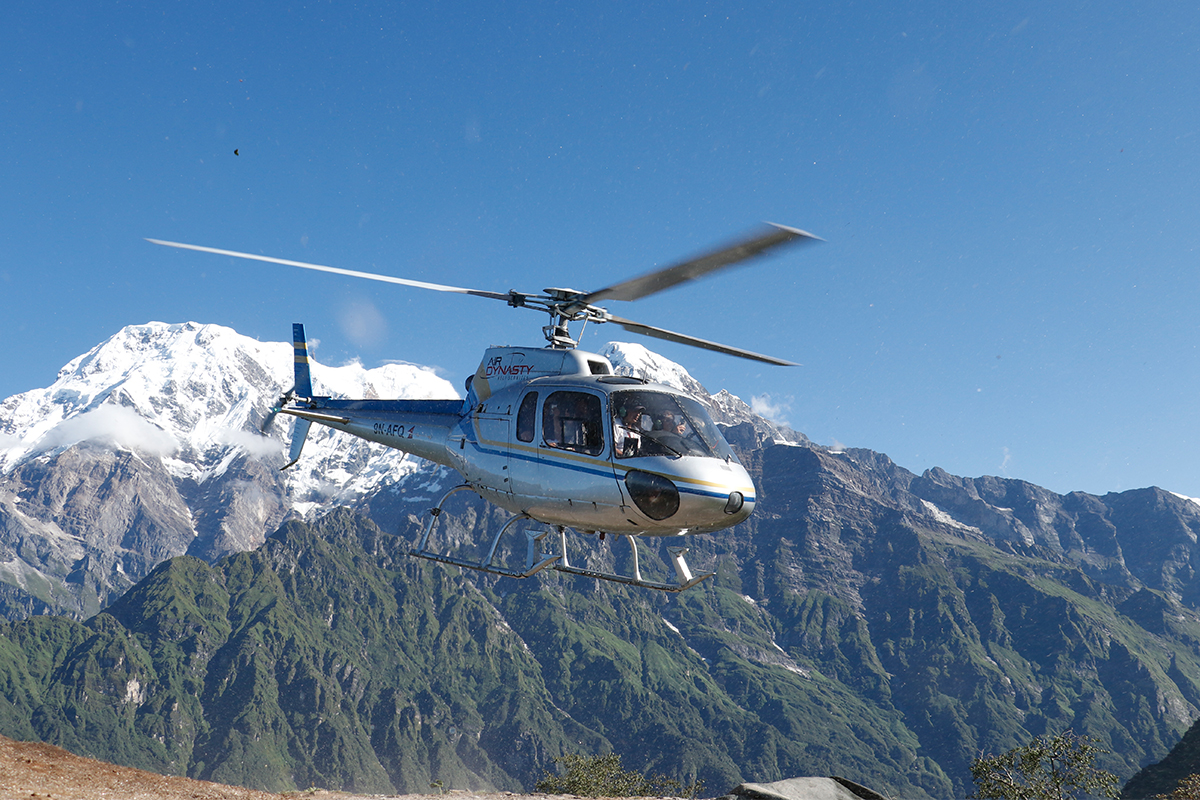
The Famous Everest Region Breakfast: This luxury Nepali experience has gained its fame for satisfactory reasons. You fly off from Kathmandu in the morning, soar above high hills and tiny Sherpa villages, and glide alongside the Himalayan giants. Then, you land at a viewpoint near Everest Base Camp and enjoy a champagne breakfast with Everest, Lhotse, and Ama Dablam in full view. By lunchtime, you're already back at your hotel, an unforgettable “I was there” moment wrapped up in just a few sensational hours.

If you crave adrenaline but don’t want to compromise on convenience, heli-skiing on untouched Himalayan snow is the new possibility that offers the perfect combination of thrill and luxury. Helicopters also open opportunities to explore remote and holy destinations like the hidden kingdom of Upper Mustang or the crystal-clear Gokyo Lakes, no need for weeks of trekking when you can reach these marvels in just hours.
Famous Luxury Heli-Tours Includes:
These experiences are ideal for visitors short on time or those who want to experience the Himalayas without the physical grind of trekking.
The Rise of Boutique Hotels in Nepal
Nepal has greatly boosted its hospitality scene over the past decade. The country now offers a range of luxury accommodations that challenge international standards while staying dedicated to its cultural roots. It’s no longer just about finding a bed for the night; it’s about engaging yourself in a delicate, meaningful experience.
In the Kathmandu Valley:
Dwarika’s Hotel, Kathmandu: Dwarika’s feels more like a living museum than a hotel; every element reflects deep respect for Nepal’s heritage. With its extravagant pool, outstanding woodwork, and graceful dining spaces, the property radiates traditional Newari craftsmanship. What started as a passion project has become a national treasure. Workers carefully restored carved windows, pillars, and doorways from ruined temples and palaces, giving each corner a story to convey. Staying here means immersing yourself in history and artistry. The Krishnarpan restaurant advances the experience with a thoughtfully prepared multi-course Nepali feast, making Dwarika’s the gold standard of heritage luxury in Nepal.
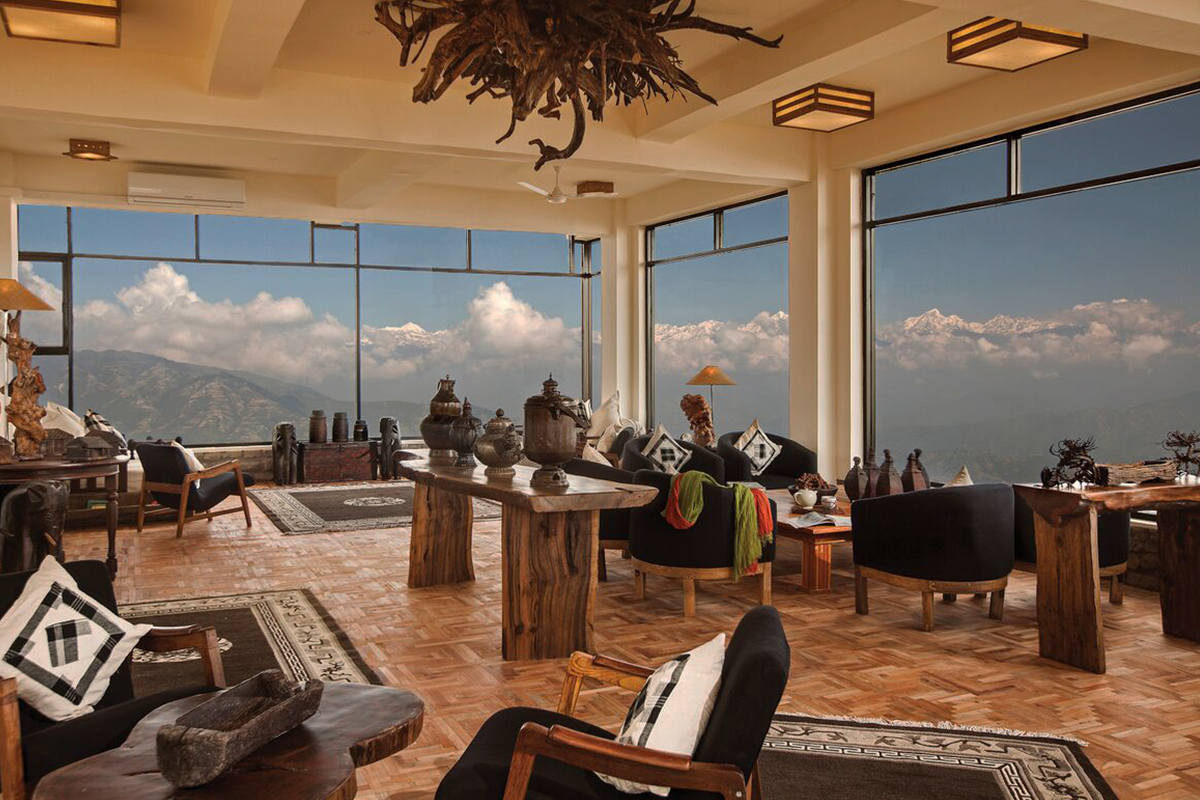
Kavya Spa & Resort, Nagarkot: Kavya Resort rises above Nagarkot as an elegant, hilltop haven that blends minimalist refinement with jaw-dropping Himalayan scenery. With its infinity pools and refined architecture, this hidden jewel offers couples and solo travelers a peaceful escape. While Dwarika’s celebrates Nepal’s prosperous past, Kavya looks boldly toward the future of luxury. Its design stays contemporary, the service runs flawlessly, and the atmosphere delivers pure, undisturbed privacy. Kavya captures a new era of international-style luxury, perfectly situated in Nepal’s scenic highlands.
The Terraces Resort, Lalitpur: The Terraces Resort in Lalitpur delivers a modern 5-star luxury experience, situated in the stunning hills of Lakuri Bhanjyang and surrounded by the brilliance of the Himalayas. Australian architect Tim Linkins designed this boutique resort to leave the lightest possible footprint on the landscape. The resort blends elegant, contemporary architecture with rich Himalayan heritage and a focus on wellness. It offers a serene getaway where raw mountain beauty meets refined urban style, all wrapped in a relaxed environment with a touch of classiness.
Gokarna Forest Resort, Kathmandu: Gokarna Forest Resort offers a quiet escape just a short drive away from the busy city. Located inside a 470-acre former royal hunting reserve, the resort showcases beautifully restored architecture from the Malla and Rana periods. Here, luxury takes the form of open space, calm surroundings, and timeless charm. It’s the flawless place to de-stress before or after a Himalayan trek. Guests can enjoy a stunning golf course with spotted deer as spectators, enjoy the best spa treatments, or walk through the undisturbed forest trails.
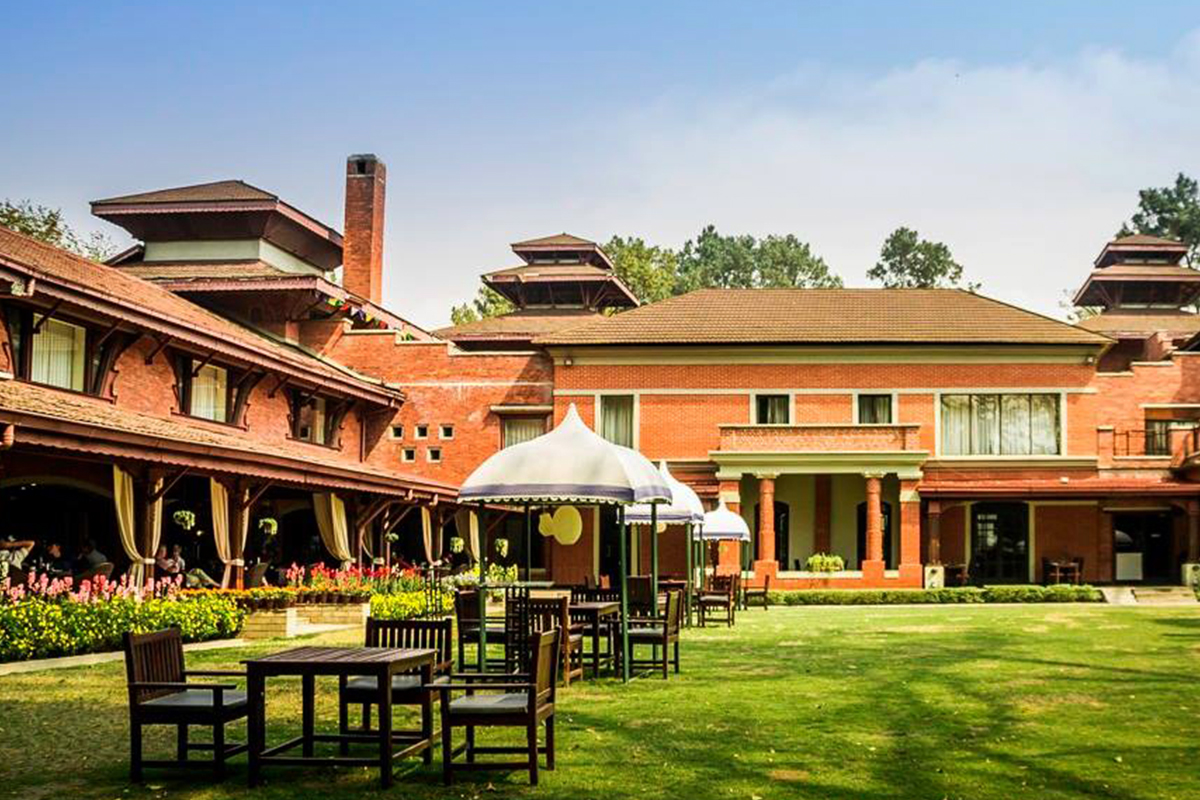
In the Mountains:
Tiger Mountain Pokhara Lodge: Set on a hill above the Pokhara Valley, it incorporates rural elegance with wonderful views of the Annapurna Range.
Shinta Mani, Mustang: Shinta Mani Mustang stands as Nepal’s finest genuine ultra-luxury lodge in the Upper Mustang region, offering far more than just a place to stay. Perched on a hillside above Jomsom, this high-altitude retreat creates freedom for deep, transformative experiences. World-renowned designer Bill Bensley infused his signature tone into every corner of the property, turning it into a sanctuary of solace and creativity. Set against the scenic backdrop of Mustang, the lodge serves as an excellent base for exploring the region’s hidden surprises while indulging in unmatched luxury.
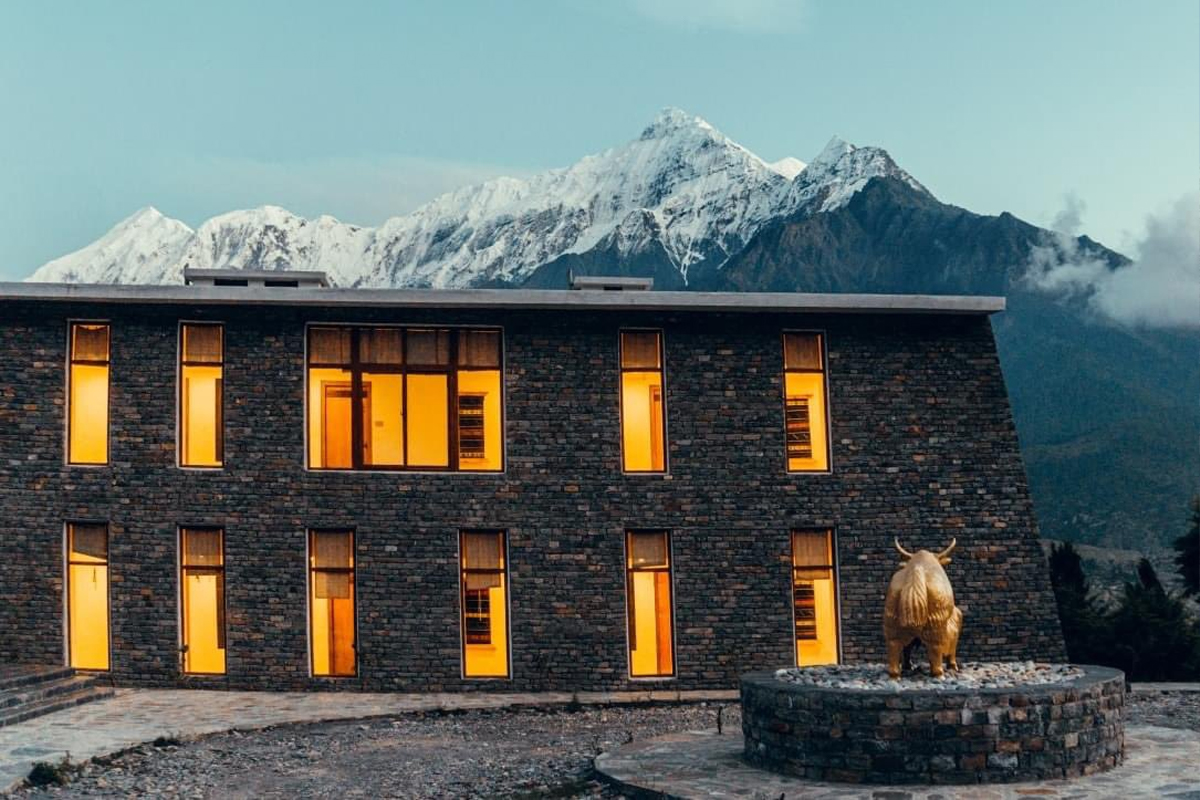
Mountain Lodges of Nepal: Mountain Lodges of Nepal (MLN) has built a network of fascinating lodges along the iconic routes of the Everest and Annapurna regions, offering trekkers a friendly and comfortable stay in the Himalayas. They prioritize authentic hospitality, local traditions, and the feeling of being truly welcomed. With a focus on safety and accessibility, MLN ensures that people of all ages can experience the charm of the mountains. Each lodge, whether in Lukla, Phakding, Dhampus, or Tomijong, brings its distinctive character while celebrating the rich culture of the region.
Fishtail Lodge by Annapurna: If you are looking for a calm and luxurious stay in Pokhara, Fishtail Lodge by Annapurna is a place where comfort meets character. Serene views of the lake and the Himalayan air combined with the warm hospitality and thoughtful amenities, Fishtail Lodge creates a wonderful retreat right by the edge of Phewa Lake. For a seamless experience from the start, the facility provides airport transportation and car rentals with complimentary Wi-Fi access throughout the property, which may go unused, keeping the serene atmosphere in mind. The lodge offers wellness experiences like spa treatments, sauna, and salon. And for outdoors, there is a pool area with a complete poolside bar to sip and sunbathe. You can find a gym inside the property to simply shake off the travel fatigue.
In Terai:
Barahi Jungle Lodge: Barahi Jungle is located on the peaceful banks of the Rapti River in Meghauli near Chitwan National Park. The ambience at Barahi Jungle Lodge itself is a journey with 12 hectares of jungle ground protecting local birds and wildlife. This property was a barren land until reforested with 5,000 trees during the establishment to offer luxury in the midst of wilderness. Apart from the surrounding lush green forests, Barahi boasts lavish amenities for staycations in Chitwan. Facilities like Spa, infinity pool, Banyan Cafe, Tiger Den Bar, Lounge area, conference hall, cultural program space, bicycle rental, and outdoor games are available within the premises of Barahi Jungle Lodge to unwind and socialize.

Meghauli Serai, A Taj Safari, Chitwan National Park: Meghauli Serai is Taj Safari’s premium luxury lodge in Nepal. It is one of the best options for luxurious jungle safaris, which happens twice a day, guided by the resort's naturalist. Deep in the forest, guests enjoy untamed wilderness and refined luxury. This place is a perfect getaway for couples seeking a romantic jungle escape, wildlife lovers looking for intimate safari adventures, and travelers exploring nature.
Luxury Evolving in the Tourism Capital, Pokhara
Pokhara has always drawn visitors, but today it’s stepping confidently into its role as Nepal’s luxury leisure capital. While it remains a starting point for trekkers heading into the Annapurna region, it’s also redefining itself as a delicate destination for wellness and exclusive escapes. Eco-conscious resorts like The Pavilions Himalayas and the Sarangkot Mountain Lodge now offer amazing experiences and sensational views. The city’s delight hasn’t changed; you can still paddle across Fewa Lake, but now you can follow it up with a sound healing session at a luxury spa, a sustainable dining experience, or a private yoga class with the Annapurna range as your background. Pokhara is integrating serenity and refinement like never before.
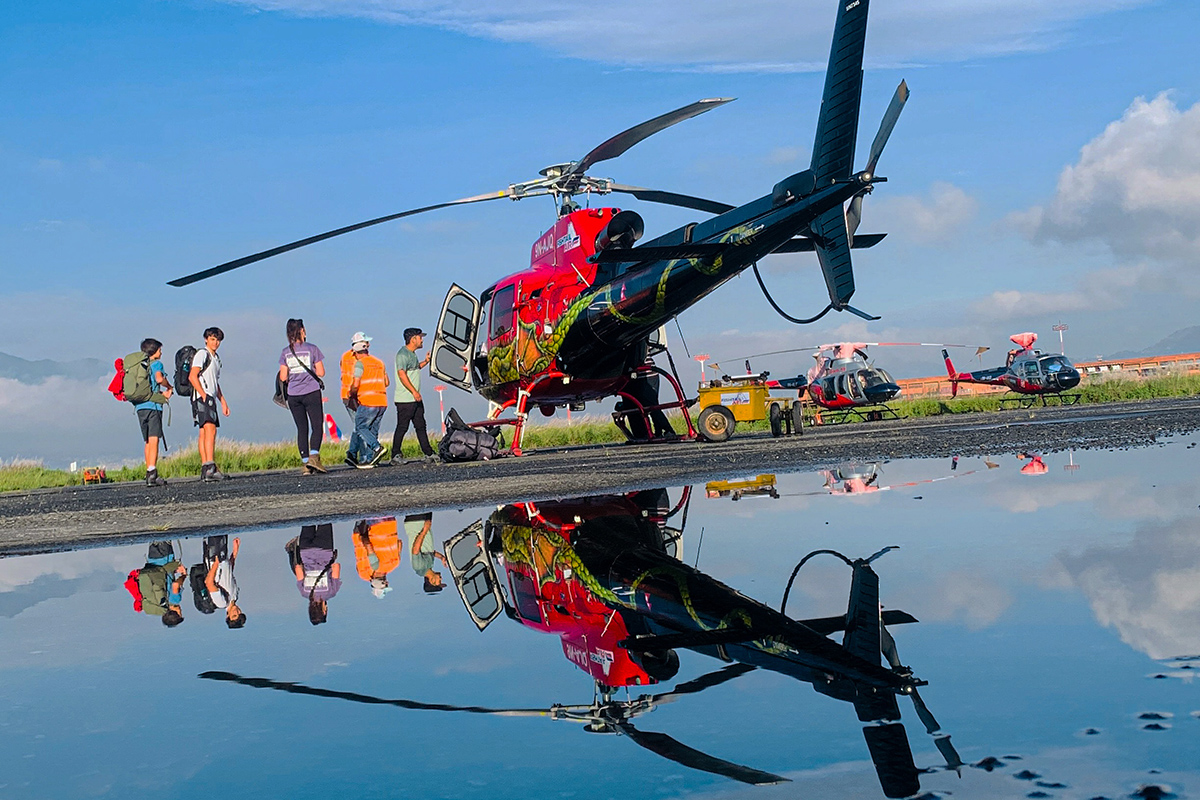
Here’s what luxury options in Pokhara look like today:
- Wellness retreats with yoga, meditation, and ayurvedic therapies
- Boutique cafes, rooftop bistros, and even fine-dining eateries along the lakeside
- Elite lakeside hotels like The Pavilions Himalayas, Bar Peepal Resort, and Fish Tail Lodge
- Heli day trips to Annapurna Base Camp, followed by a lavish lunch in Pokhara
- Private boating on Phewa Lake at sunrise or sundown with wine and melody
Pokhara has developed beyond being just the starting point for Annapurna trekking; it now offers a lavish retreat where visitors can de-stress after their mountain journey. At the same time, Chitwan is stepping up as a luxury destination at its own pace. Resorts like Kasara are setting a high benchmark, delivering premier comfort and experience in the jungleland.
Cultural Depth & Sustainability: The New Luxury
Nepal stands out by delivering luxury that holds purpose and meaning. Today’s travelers seek more than lavish rooms and gourmet meals; they desire authenticity, cultural richness, and sustainable experiences. And Nepal is stepping up to deliver that exactly.
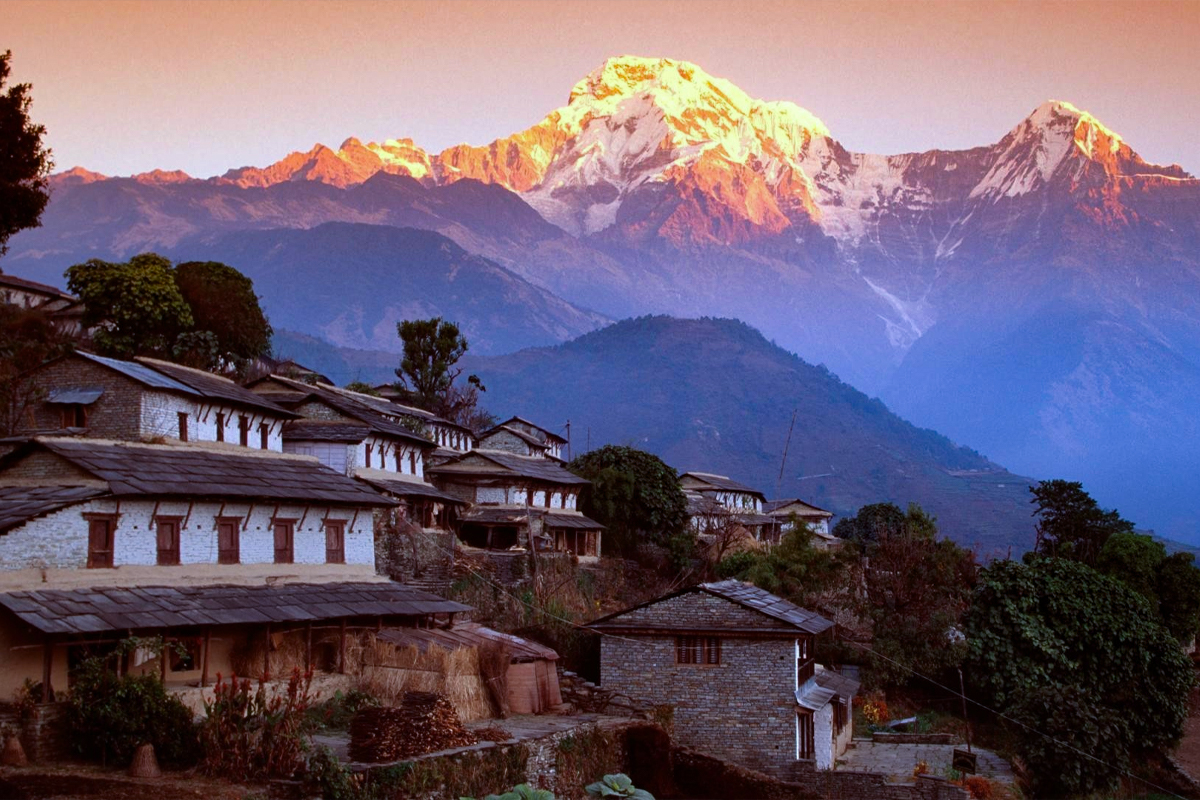
- Community-based tourism standards ensure that local people benefit from high-end tourism
- Many luxury lodgings now incorporate locally sourced materials and embrace eco-friendly architecture in their designs
- Luxury operators now offer valuable cultural interactions, from cooking classes to personal monastery visits with monks
In Nepal, luxury is no longer just about escape; it’s about a deeper connection.
What’s Next For Nepali Luxury?
As Nepal focuses on more affluent and experience-focused visitors, we can expect continued growth and innovation. The road ahead looks even more promising. Here's what the future holds:
Sustainable & Conscious Luxury: Today’s luxury traveler desires more than just convenience; they want their travel to leave a positive influence. The future of travel lies in high-end eco-lodges that practice full sustainability, uplift local communities, and invite visitors to take part in impactful conservation or social endeavors. True luxury now includes the capability to make a difference.
Spiritual and Wellness Luxury: Nepal’s most fabulous treasure is its deep spiritual energy. The future focuses on highly curated wellness retreats that combine yoga, Vipassana meditation, classic Ayurvedic therapies, and sound healing with five-star convenience. It’s luxury designed to nurture both the mind and the soul.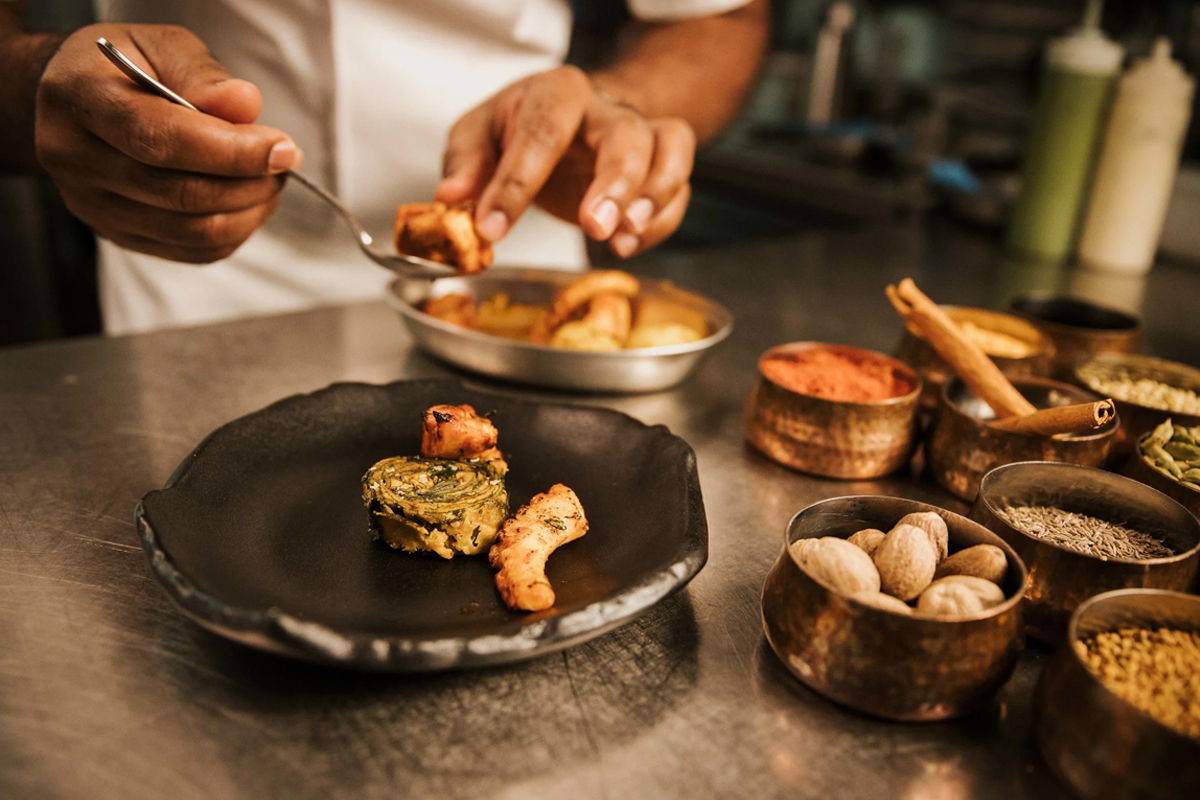
Gastronomic Experiences: The world has yet to explore the rich diversity of Nepali cuisine. In the future, travelers can expect luxury food tours, private cooking classes with prominent Nepali chefs, and exclusive farm-to-table experiences that showcase the culinary legacy of the Newar, Thakali, and Tharu communities.
Also, in the future, we are likely to see:
- Increased trends in wellness tourism, such as high-altitude spa retreats, detox programs, and advanced sound healing
- Expansion in boutique and eco-luxury lodges in lesser-known areas like Rara, Dolpo, Ilam, and Bajura
- Growth of luxury infrastructure at airports and remote heliports
- Private, custom-designed treks and tours with luxury concepts like photography, spirituality, or gourmet food
Can Nepal Handle the Rise of Luxury Tourism? (Possible Challenges)
The evolution of luxury tourism in Nepal is both exciting and full of possibilities, but it also brings significant challenges. As a country still growing its infrastructure and working to improve sustainable management in certain areas, Nepal must balance this advancement in high-end travel carefully to prevent long-term hardships.
Here are some vital challenges the country may face as it steps into the future of luxury tourism:
Balancing Authenticity
Luxury travelers aim for both convenience and authentic cultural experiences, a balance that can be tricky to hold. When traditions are overly commercialized or produced purely to please visitors, they risk deteriorating cultural integrity and making the experience feel less genuine.
The Risk: Tharu dancers lose their soul when reduced to routine shows, monastery visits feel like just a checklist stops, and mountain villages struggle under the consequences of rising luxury demands.
Solution
- Educate visitors about the actual stories behind traditions
- Promote slow/conscious luxury travel, where fewer things are done, but with more serious meaning
- Engage local communities directly in framing the experience
Infrastructure Limitations
Nepal’s roads, airports, and general transportation infrastructure still lag behind global luxury standards. While luxury packages often include helicopter rides and chartered flights, many high-end tourists expect smooth arrivals, effortless transfers, and premium vehicle options, a level of convenience Nepal has yet to fully deliver, especially outside Kathmandu and Pokhara.
Solution
- Upgraded airport terminals (mainly in cities like Pokhara and Lumbini)
- Investment in more reasonable domestic flight services, road connectivity, and luxury-grade automobiles
Limited Skilled Workforce
Providing an authentic luxury experience requires a qualified, hospitable, multilingual, and professional workforce, particularly in fine dining, wellness, private guiding, and exceptional customer service. While Nepal is inherently rich in generous hospitality, formal training for luxury standards is still in its early stages.
Solution
- Condition local youth to become leaders, chefs, and guides for the luxury sector
- Adequate funding for tourism and hospitality education agendas
- Partner with global institutes to set international service benchmarks
Environmental Pressure
The expansion of luxury infrastructure from private lodges and heli landing spots to high-end resort construction poses a serious hazard to delicate mountain ecosystems. Famous trekking regions already struggle with waste management, fuel consumption, water sourcing, and trail erosion. Without proper resolutions, luxury tourism could easily add to Nepal’s ecological damage.
Solution
- Tough regulation for luxury properties in protected regions
- Eco-conscious building practices and energy-efficient strategies
- Encourage and honor resorts and lodges to adopt zero-waste policies and carbon-neutral goals
Socioeconomic Variations
Luxury tourism usually highlights the economic gap between wealthy visitors and local societies, mainly in rural or remote areas. While it can generate jobs and foster the local economy, uneven growth may widen inequality, create bitterness, and even displace traditional livelihoods.
For Example, if a multinational luxury brand sets up a $1000-a-night lodge in a Himalayan village, but the locals still earn $3 a day from farming, there’s a gap that needs to be fulfilled with care.
Solution
- Encourage community-owned luxury lodgings or profit-sharing models
- Guarantee local employment and reasonable wages within the luxury tourism sector
- Prioritize local sourcing; food, decor, experiences to keep finances in the community
Final Words From Writer
Nepal’s luxury tourism future shines with possibilities, but its success depends on following it with care, sustainability, and a serious focus on community. The country is stepping onto the world’s luxury stage with enthusiasm, recognizing that its true worth isn’t in gold-plated decor. Instead, its greatest gems lie in spectacular landscapes, deep spiritual energy, and the sincere warmth of its people, now enhanced with a delicate layer of comfort and care.
If Nepal balances convenience with culture, development with environmental care, and growth with commitment, it can actually become one of the world’s most unique, soulful, and transformative luxury travel destinations. Whether you’re visiting for the first time or returning in search of renewed experiences, Nepal stands ready to impress you with remarkable elegance.
The mountains are calling, and this time, they have a bottle of champagne on ice waiting for you.
